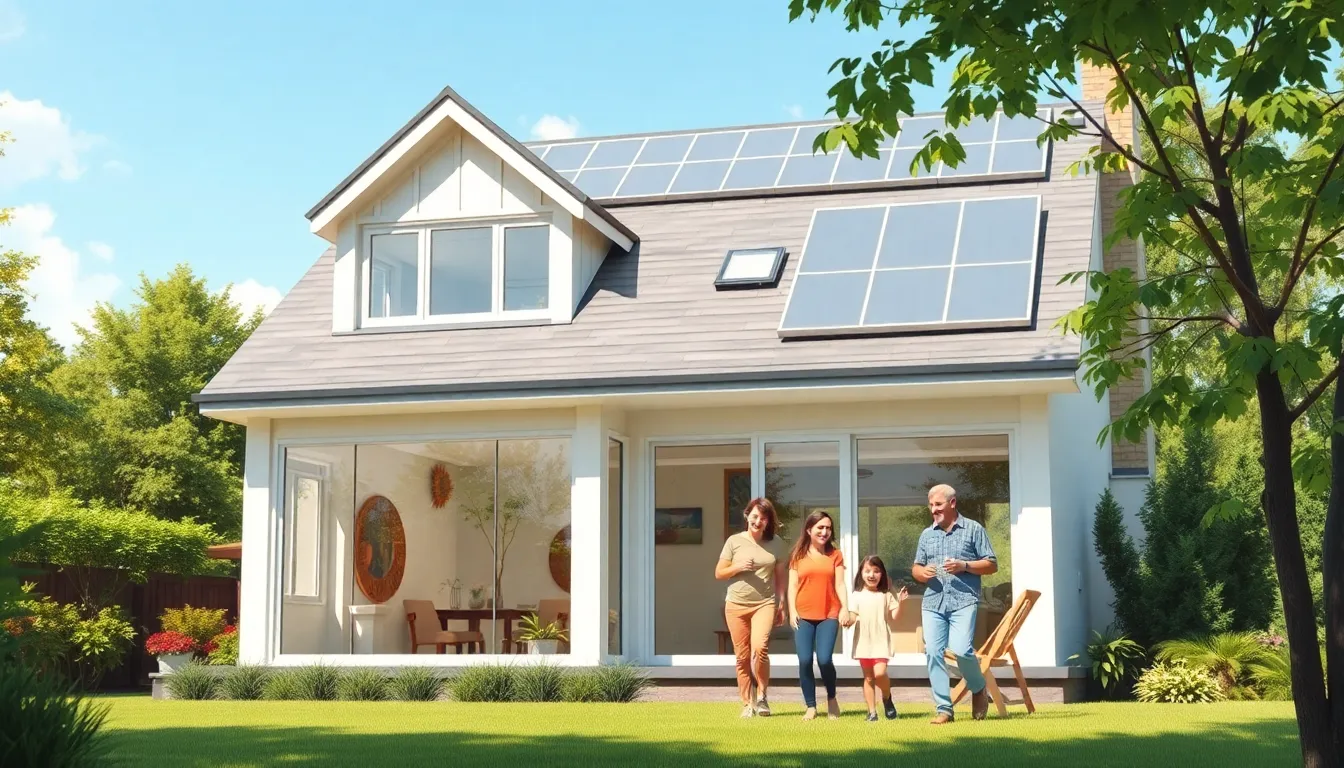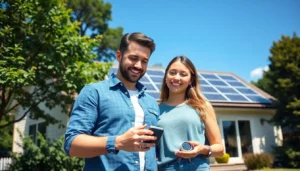Table of Contents
ToggleIn a world where energy bills seem to rise faster than a cat up a tree, the question of whether new homes are energy efficient is more relevant than ever. Picture this: a house that keeps you cozy in winter and cool in summer without sending your wallet into a tailspin. Sounds like a dream, right? Well, it might just be a reality.
New homes often come equipped with the latest energy-saving technologies, from smart thermostats to high-efficiency appliances. But are they really as green as they claim? With builders racing to meet modern energy standards, it’s time to dig deeper and separate the eco-friendly facts from the marketing fluff. Buckle up as we explore the energy efficiency of new homes and discover if they truly live up to the hype or if they’re just another shiny façade.
Overview of Energy Efficiency in New Homes
Energy efficiency in new homes matters as energy costs continue to rise. Modern construction practices focus on sustainable materials and methods. Builders often incorporate advanced technologies, like smart thermostats and high-efficiency appliances, that help reduce energy consumption.
Standards set by organizations such as ENERGY STAR demonstrate how new homes meet specific energy performance criteria. These homes typically feature improved insulation, energy-efficient windows, and high-grade HVAC systems. Effective insulation minimizes heat loss, while energy-efficient windows limit air leakage. High-grade HVAC systems utilize less energy while maintaining optimal indoor temperatures.
New homes also tend to include solar power systems, which can significantly decrease reliance on traditional energy sources. Such systems capture renewable energy from the sun, thereby lowering utility bills. In addition, the use of smart home technology allows homeowners to manage energy use efficiently and enhance comfort.
Despite advancements, skepticism about claims of energy efficiency exists. Some homes may be marketed as energy-efficient without meeting the most rigorous standards. Homebuyers must research and verify these claims through energy performance certifications or independent assessments.
While it’s clear that new homes offer many energy-efficient features, the effectiveness can vary based on location and building practices. Buildings in warmer climates might prioritize cooling technologies, while homes in colder regions emphasize heating solutions. Understanding local energy efficiency initiatives further aids in evaluating a new home’s eco-friendliness.
Benefits of Energy-Efficient Homes

New homes designed with energy efficiency in mind offer numerous advantages that resonate with homeowners and the environment alike. These benefits stand out in an era marked by rising energy costs and a growing focus on sustainability.
Lower Utility Costs
Lower utility costs serve as one of the most appealing aspects of energy-efficient homes. Homeowners often enjoy reduced monthly bills due to advanced insulation and high-efficiency appliances. For example, a smart thermostat can cut heating and cooling costs by 10 to 15 percent. Efficient windows also help retain heat in winter and keep interiors cool during summer, further lowering energy expenses. Many energy-efficient homes achieve savings of up to 30 percent on utility bills, making them a smart financial choice.
Environmental Impact
Environmental impact plays a crucial role in the benefits of energy-efficient homes. These homes significantly reduce greenhouse gas emissions by consuming less energy. For instance, ENERGY STAR-certified homes have shown a 30 percent reduction in emissions compared to standard homes. Additionally, utilizing solar power systems enables homeowners to harness renewable energy, further decreasing reliance on fossil fuels. Sustainable materials used in construction minimize waste and conserve natural resources, contributing to a healthier planet while enhancing the overall living experience.
Key Features of Energy-Efficient New Homes
Energy-efficient new homes feature several important characteristics that contribute to lower energy consumption and enhanced comfort.
Insulation and Windows
Modern homes utilize advanced insulation materials to maintain stable indoor temperatures. Insulation helps minimize heat loss in winter and keeps interiors cool in summer. Energy-efficient windows further enhance performance by reducing air leakage and incorporating low-emissivity coatings. These coatings limit heat transfer, allowing homeowners to benefit from natural light without compromising energy efficiency. As a result, many energy-efficient homes achieve a significant reduction in energy usage, which translates to lower utility costs.
Energy-Efficient Appliances
Appliances labeled with ENERGY STAR certifications consume less energy while delivering optimal performance. These appliances, from refrigerators to washing machines, often use innovative technologies that enhance efficiency. Homeowners enjoy benefits such as reduced electricity bills and longer appliance lifespans. For instance, a high-efficiency dishwasher can save over 3,000 gallons of water annually compared to conventional models. Consequently, investing in energy-efficient appliances proves beneficial for both the environment and household budgets.
Factors Affecting Energy Efficiency
Multiple elements determine the energy efficiency of new homes. Understanding these factors helps ensure homeowners make informed choices.
Location and Climate
Location significantly impacts energy efficiency in new homes. Different climates demand distinct energy-saving technologies. For instance, homes in colder regions benefit from higher insulation values, while those in warmer areas prioritize ventilation and shading. Local weather patterns affect energy usage, as homes in humid climates require efficient cooling systems. Climate zones that have extreme temperatures often see higher energy costs, making energy efficiency more vital. Therefore, prospective homeowners should choose energy-efficient features tailored to their specific local conditions.
Building Materials
The choice of building materials plays a crucial role in energy efficiency. Sustainable materials enhance thermal performance, contributing to lower energy consumption. For example, insulated concrete forms provide superior insulation compared to traditional materials. Advanced framing techniques can further improve energy efficiency by reducing thermal bridging. Utilizing energy-efficient windows helps prevent heat loss, complementing the insulation efforts. Homebuilders should consider materials with high recycled content, which not only reduces environmental impact but also improves overall energy performance. Selecting the right materials ensures that new homes meet energy efficiency expectations.
New homes can offer substantial energy efficiency advantages but it’s crucial for homebuyers to remain vigilant. While many new constructions boast advanced technologies and sustainable materials, not all meet the promised standards. Researching energy performance certifications and seeking independent assessments can ensure that the home truly delivers on its energy-saving claims.
By understanding the specific energy-efficient features and how they align with local climate needs, homeowners can make informed decisions. Embracing energy-efficient living not only leads to lower utility bills but also contributes to a healthier environment, making it a worthwhile pursuit for future homeowners.




